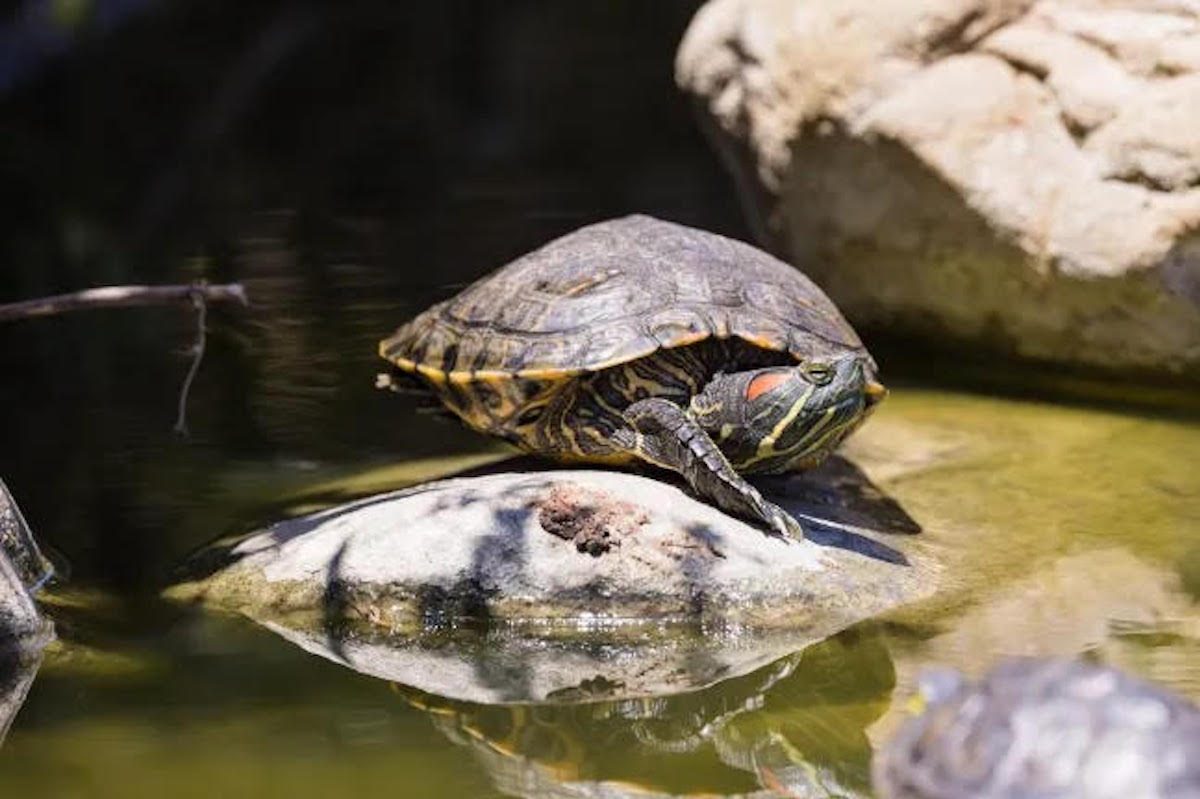Farewell, Friends: 86 Turtles Relocated from Alice Keck Park Memorial Garden
Illegally Dumped Turtles Relocated to Animal Sanctuary

At first glance, the tranquil Alice Keck Park Memorial Garden pond reflects inconspicuous ducks floating on the water’s surface. Look a little closer, and you’ll start to notice little heads poking out all around — those are red-eared sliders, turtles that moved in after being illegally dumped by pet owners years ago. Now, their population is estimated at more than 200, a number that isn’t sustainable for the pond’s ecosystem. Last week, Santa Barbara city park officials removed about 86 of the turtles to Turtle and Tortoise Rescue in Arroyo Grande, a sanctuary that’s much more well equipped to house the turtles and find them homes.
Alice Keck Park Memorial Garden was completed in 1976, after an anonymous donor purchased the property and donated it to the city, with the stipulation that it be made into a free public park. In adherence with the requests of Alice Park, the nearly five-acre city block was created to be a horticultural garden, with a focus on Santa’s Barbara’s native plants. More than 70 species of trees and plants, a butterfly garden, and a manmade koi pond have made this garden one of the most popular destinations downtown. There’s just one thing that wasn’t in the plans — hundreds of turtles.
Over the past decade, the turtles have slowly but surely taken over the pond; the original koi and aquatic plants are long gone, pushed out by the invasive red-eared sliders. Jeff Hobbs, who operates Turtle and Tortoise Rescue, explained the disruptive nature of the species: “Red-eared sliders are mostly female and are near constantly producing hard-shelled eggs which have a higher rate of survival. They’re also a pretty aggressive turtle and will bite and rip koi fish and other turtles, whereas the native western pond turtle is quite submissive — [the sliders] push out the other species through sheer population and domination.” The western pond turtle is now on the endangered species list, a product of the overabundance of red-eared sliders abandoned by pet owners — which is a misdemeanor in California.
“The turtles get big, they get stinky, they get salmonella … and instead of finding them a new home, [owners] flip them into local ponds and leave the city to take care of them, which they can’t,” said Hobbs. That’s where the Turtle and Tortoise Rescue comes in, rehoming the sliders to a five-acre pond with pristine water and three separate filters. The turtles and the rescue’s other animals will be part of an outdoor education program, focused on youth and people with disabilities: “We want to reach out and help people.” Hobbs remarked.
The hunt continues at the park: Current plans are to remove another 100 next week, turtle-catching skills permitting. “They’re hard to catch. They’re elusive,” said Simón Herrera, parks manager for the city. These turtle removals have happened periodically over the years, as the reptiles continue to reproduce, laying their eggs in the planter beds throughout the park.
The more turtles, the more waste — four years ago the park did a complete pond restoration, which involved removing five feet of muck composed of turtle waste and food thrown in by visitors. Herrera described the water quality back then as “horrendous” and hopes to avoid another muck removal by keeping the turtle population low: “We spent a lot of money cleaning it, and we don’t want to do that again.” Park officials will be keeping a few of the turtles, which have become a favorite for park visitors, and plan to reintroduce the koi and plants if the water quality improves.
Jazmine Leblanc, assistant director at Parks and Recreation, is grateful for the shelter: “We’re so lucky [Turtle and Tortoise Rescue] exists and was able to take care of them. Otherwise we would still have this challenge at the park, where the pond is not in the condition it should be in, and the turtles aren’t in a safe environment.”
Leblanc urged park visitors to be animal and environmentally conscious: “Don’t adopt a pet unless you think you can really take care of it throughout its life, and don’t just dump them somewhere if you can’t.” The sanctuary recommended Craigslist, Nextdoor, or rescues as better alternatives for a new red-eared slider, which can live up to 30-40 years in captivity.



